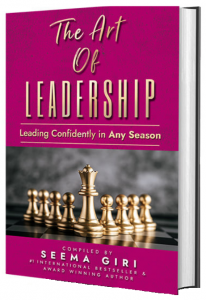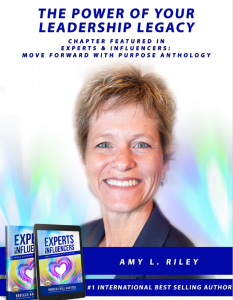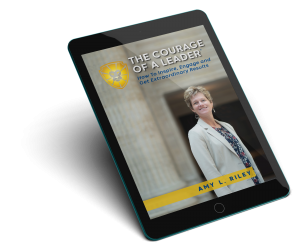Today my guest is John Lanier, CEO of Middle Market Methods. You’ll immediately hear his passion for efficiency, effectiveness and creating value. I’m glad you’re here for our discussion on how to execute extremely well on true priorities. I know you’ll walk away with actionable ideas!
About the Guest:
John Lanier is CEO of Middle Market Methods (“M3”). He began his career in asset-based lending, to which he attributes valuable lessons in cash flow and working capital integrity. In the most recent 21 years, he has supported lower middle market portfolio companies of private equity sponsors.
M3 focuses on value-creating solutions covering strategy, growth, productivity, and people. The “resultancy” practice has logged over 500 deliverables for more than 170 portfolio companies for at least 65 private equity firms. John memorialized his methodology in a book entitled Value-Creation in Middle Market Private Equity. He also writes quarterly value-creation articles. John has a BBA in Finance from Georgia, an MBA from St. Leo, and a Doctorate in Strategic Leadership from Regent.
John and his wife of 43 years are proud parents of two awesomely accomplished daughters and their respective sons-in-law. The Lanier family avidly supports rescue dogs.
https://middlemarketmethods.com/
About the Host:
Amy L. Riley is an internationally renowned speaker, author and consultant. She has over 2 decades of experience developing leaders at all levels. Her clients include Cisco Systems, Deloitte and Barclays.
As a trusted leadership coach and consultant, Amy has worked with hundreds of leaders one-on-one, and thousands more as part of a group, to fully step into their leadership, create amazing teams and achieve extraordinary results.
Amy’s most popular keynote speeches are:
The Courage of a Leader: The Power of a Leadership Legacy
The Courage of a Leader: Create a Competitive Advantage with Sustainable, Results-Producing Cross-System Collaboration
The Courage of a Leader: Accelerate Trust with Your Team, Customers and Community
The Courage of a Leader: How to Build a Happy and Successful Hybrid Team
Her new book is a #1 international best-seller and is entitled, The Courage of a Leader: How to Inspire, Engage and Get Extraordinary Results.
https://www.linkedin.com/in/amyshoopriley/
Link mentioned in the podcast
The Inspire Your Team assessment (the courage assessment): https://courageofaleader.com/inspireyourteam/
Start with Why by Simon Sinek
https://www.amazon.com/Start-Why-Leaders-Inspire-Everyone/dp/1591846447
Execution: The Discipline of Getting Things Done by Ram Charan and Larry Bossidy
https://www.amazon.com/dp/0609610570
How Big Things Get Done: The Surprising Factors That Determine the Fate of Every Project, from Home Renovations to Space Exploration and Everything In Between
https://www.amazon.com/dp/0593239512
Thanks for listening!
Thanks so much for listening to The Courage of a Leader podcast! If you got inspired and/or got valuable leadership techniques you can use from this episode and think that others could benefit from listening, please share using the social media buttons on this page.
Do you have questions or feedback about this episode? Leave a comment in the section below!
Subscribe to the podcast
If you would like to get automatic updates of new The Courage of a Leader podcast episodes, you can subscribe to the podcast on Apple Podcasts. You can also subscribe in your favorite podcast app.
Leave us an Apple Podcasts review
Ratings and reviews from our listeners are extremely valuable to us and greatly appreciated. They help our podcast rank higher on Apple Podcasts, which helps us ignite The Courage of a Leader in more leaders! Please take a minute and leave an honest review on Apple Podcasts.
Teaser for next episode
Tune in next for How to Make Courageous Bold Moves in Your Business with my guest, Courtney Wright.
Transcript
Today, my guest on the courage of a leader podcast is John Lanier, CEO of Middle Market Methods, you'll immediately hear his passion for efficiency, effectiveness and creating value. I'm glad you're here for our discussion on how to execute extremely well on true priorities. And I'm excited because I know you'll walk away with actionable ideas.
Amy Riley:Welcome to the Courage of a Leader podcast. This is where you hear real life stories of top leaders achieving extraordinary results. And you get practical advice and techniques, you can immediately apply for your own success. This is where you will get inspired. And take bold, courageous action items. So glad you can join us. I'm your host, Amy Riley. Now, are you ready to step into the full power of your leadership and achieve the results you care about most? Let's ignite the Courage of a Leader.
Amy Riley:John, thank you for being here today. You are an expert in strategy growth, productivity and people. So there are a good number of leadership focused topics that you and I could have explored. During this conversation. I asked you if we could discuss how to execute well on true priorities. Because I know I work with many leaders who struggled to prioritize, struggle to stick to those priorities, and are constantly getting sidelined by the fire of the day. And of course, our marketplace is dynamic, and things are shifting quickly. So let me start here with that topic. How do you define or how do you think about priorities?
John Lanier:It's one of my favorite topics, actually. And I'm pleased to be with you all, are bombarded with way more information than we can digest. Filtering algorithms to the professionals call it cognitive dissonance, and sometimes it works in our favor, and sometimes it weeds out the wrong stuff. But absent formal training in a model to know how to address this stuff, we can focus inappropriately, too much time on things that don't matter, and completely whiffed on things that do.
Amy Riley:So I've seen priorities being determined by the squeakiest wheel, or hey, this is the request that was made by the most senior leader in my org, I should start there. How could a leader truly think objectively about setting priorities?
John Lanier:Well, I want to go back to some of your entree comments there because you dangle red meat in front of a hungry tiger. One, I identify as the urgent versus the important, nice. There are a lot of things that could consume our bandwidth. And those are tactical things that happened during the day and let's let's relate it to the homes we live in. If we have a water leak, as urgent and lack of attention can metastasize into something terrible, like a flooded basement, rotten wood and all that beautiful stuff. But is it really important? Like are we in the right neighborhood? For our kids schools? Do we want to retire here? Those are more thoughtful questions and they're more strategic in nature. So that's one thing that triggered my Pavlovian response. The other was, you traced it to the boss. Worst kind of power ever in an organization has position power. You can it is very efficient, do this, but it skips over a lot of things I hope we have time to visit home and discuss is the influential aspects the solicitous piece about okay, I need input. In one of my I'm an avid reader, continuous student. And Simon Sinek had a best seller a while back called Start With Why Yeah. And it's one of those things that if we don't address we can't count on our constituency automatically invest in their personal capital in this big decision because they might not agree with it. I'd have a better idea but your calls we're all knowing because we have position power. We assume we know the right answers. You know what they say about assumptions right? You We're here. So you already got my attention that we tripped over two things that I think are no notes,
Amy Riley:say more about urgent versus important. You gave a great analogy, right? I love the analogy of, hey, it's urgent. There's a water leak, what's really important, right? Are we in the right neighborhood? Are our kids set up to go to schools that we prefer? Are we just are we just assessing like, here's the things I think are important, I should give them that label, and then make sure that there is enough important things in that list?
John Lanier:Sure. Let's give it a little context, and might be a better answer. For from my perspective, is it? I do a lot of planning with people? Yeah, my target market is predominated by private equity investors. Their job is to find small businesses with a lot of potential and it may be the first institutionalized capital that has come to the owner, operator, founder, owner operator. And the strategy often is in their hands. Because it's worked that way. And one of the things that professional investor does is institutionalized and a culture eight, something you and I might recognize is, is governance, because it has policies and procedures that are documented from disaster recovery, business continuity, the buzzword now is contingency planning. So when I go through a planning session in something new pops up, particularly when it's strategic, a common reaction is I don't have time to do that. Yeah. Okay. I hear you why. And that's when you start understanding from their perspective, and this, there's some change management baggage here. Unless I address something that is really preoccupying somebody's time, like the leaky water line that I alluded to earlier, if you don't take that off the table, it's really hard folks. So just like if you're camping, and and somebody's snoring, you're not necessarily going to be able to fall asleep. So you take the distraction off the table. But that's only, that's only a piece of it. I'd argue that if you're planning, you've got to have a goal in mind. The ancient Mariners and their sextants, they had to have a North Star to point to before they started trying to navigate. Okay, what's our North Star? Be a statement where we have to be the best at x. Okay, that's a nice generic statement, fill in the blank. How do you know you you got there, or even back to being there? And then you get into a goal. So okay, well, how do we make that happen? And then you get down to the urgent versus important because the for me, ultimately, if your aspiration is enhanced enterprise value, your first have to ask, Why are Why did my customers buy from me? I call that a unique value proposition. And customers buy because they perceive value. I don't talk about price. The value is what I get versus what I paid hat is really value matters that I get it when I wanted it. That's timeliness. Is it any good, that's quality. And it's one of those three or some combination, those three failed, and there's a service thing for how fast do I acknowledge it and remedy it. That is why customers buy friends. So whatever it is, is your car is your house is your clothing is your computers, whatever it is your food. It all maps back to those decisions. And every prioritize, I would argue should enhance our ability to substantiate and lever our unique value proposition. So yeah, there are some simple tools that you could use when you have an urn out plan with people. It is really, really common. It is really, really common that there is more to do than you could get done in five years or less. And there's almost this this panic in somebody's face. I've been on the other side of that, by the way. I know what feels like. Yeah,
Amy Riley:I see. Leaders eyes every day job. Yeah.
John Lanier:So it's oh my gosh, we can't get all that done in your said, don't worry. Don't worry. Don't have to list us something to help us sort through it. Okay. Well, this is where we get into criteria. Urgent versus the important I use simple tools. A payoff matrix. Great. It has two axes. One is how hard Is it to do? Yeah. And you have to have a lot of demarcation between easy and hard. And I usually use time. Okay. I get it done in 90 days. That's fairly simple. That small, like, four quarters. That's another trigger. That's complex. Yeah. Project Plan. So that's a whole nother topic. Yep. The impact. What is the impact? Yeah, relative to the business model, I'll just pull a number out there on a run rate basis, do I benefit not more or less than $28,000 a year. And it's amazing how those simple things 90 days and 250 can help you. So what you tend to see when you talk about this stuff, is that you've got some high impact easy things. Those have to be number one, because they help pay for everything else. There are some low impact hard to do the opposite extreme low impact hard. Don't do it. But put it in that matrix. People don't get it like wow, not much benefit. And that takes forever. Okay, we can kill out. Yeah. Now we're left with the other two are not, you should do your low impact, easy to do. Second, because it helps pay for other stuff as opposed to going and borrowing money to do it.
Amy Riley:Is that also creating some momentum? John? Of course. Right? Yeah,
John Lanier:of course. There was a book a few years back by Ram Charan and Larry Bossidy, the call discipline, the execution of getting things done something like that. And here was my major takeaway. Any company and he was really these two authors were really, they really aiming this? More institutionalized companies and they said, if you try to do more than three things at one time, you're not going to get anything done. We'll think about how how much with the resource pools that they probably have at their disposal, how much more important it is to maybe focus on one lower middle mark. So that's when project management is your friend. Yes. There's another important point on that. Yeah. And they introduce another book title is called How Big Things Get Done. Okay. And it had his lovely quote in it. It's grammatically incorrect, but so I'm gonna modify it a little bit, but it basically what I'm saying plan slowly. Execute fast. Okay. Yeah, quote, was plan, execute fast. My English teacher wouldn't like me for that she wouldn't. But what they're really saying is, if it's complex, inherently, it's gonna take a long time, it's got a lot of tasks, there are a lot of dependencies is going to suck resources, like a black hole in space, plan, plan, plan, because it will never be perfect. But try Mize the surprises and really, really get your arms around how long this could take to do. Yeah, but I find for people, by the way, plug for project management. I think it is one of the most underappreciated skill sets and all of business irrespective of size, age, profitability, or any other criteria you want to put on it is how do you manage getting back to the the title of this discussion is how do you? How do you execute true priorities? If it's complex, then project management is your buddy. And in a very simple litmus test. So how long do you think this will take? Sounds like a month? Is it? Well, wait a minute, is there some order here? About what Yeah, yeah. Second, third, and when you find out it's two is dependent on one and three is dependent on two became 90. When you have that picture, one of the beauties of this is that when you know who needs to do the task, you must go to them about when you're going to need it. It also flushes out whether you have the bandwidth at all, or the skill sets to do this stuff.
Amy Riley:This is this is really great. I want to pause you there, John, because you have said so many great things that I want to underline underscore for listeners. First, I love this urgent versus important. And this idea of hey, look at the ones that seem urgent. And if they're gonna distract you from being able to work on what's important, let's take care of them. Right, but be honest with yourself about that. Then when you're looking at what's important. What is your Northstar? Where are you headed? How are you going to know when you're there? That's your goal. What leads you towards your goal? Right? What is creating value in terms of timeliness quality service, that's going to help serve your goal. Use that as determinants, then you talked about creating criteria. Right? So you could look at your effort, impact grit, and you put forth the criteria of time, and money. Right. So how hard is it going to be? How long is it going to take for other leaders? That might be resources, right, or skill or skill set? How hard is it going to be and then the impact? And you start with your stuff? That's not hard. It gives a great impact. And then you said go to some of the things where it's it's low impact, but lower on the hard on the effort scale? Right. And then you're talking about how amazingly instructive project management can be get your GART Gantt Chart chart together? What's the sequence? What's the handoffs, what's the interdependencies get that all laid out in some kind of spreadsheet or software? So you can take a look at that and really understand, what's the overall timeline? What are you? What are you up against here? So that you can prioritize and decide how many priorities you can take on at once?
John Lanier:And add a footnote to the urgent piece? Absolutely. Sometimes, the urgent is a byproduct of not taking time to teach somebody else how to do it.
Amy Riley:Ah, okay. So now you've become the bottleneck.
John Lanier:Yes, inherently. So it is very common in my practice, when I'm working again, with these these founder entrepreneurs, and they are used to multitasking all of them because they can't afford an army. And sometimes a creeps up on them. That it's time for me to teach somebody else how to do this, not only to be able to take a vacation every now and then. But you could get hit by bus. The number one hazard of leaders in small companies, when they run out of time, is they don't have time to think about priorities. By default, they get into urgencies because they don't have time to think about priorities. I'll get to it tonight. No, you won't. You can be exhausted. You got you might be coaching little league to or something like No, you won't. Yeah. So you start off behind the next morning. And it just keeps building and building and building and it can wear you out it is a physically taxing and it's emotionally draining. So that is why am I and I asked some people sometimes just write down for a week for me in 30 minute chunks, where you spend your time. And when you have this pie chart at the end, he said this, is your wife hiring somebody to replace you. Is this your expectation? And I can't recall anybody ever saying Yo, this reaction is more like, wow, I didn't realize I was investing that much time in this is that can be fixed. But getting to the people piece by and change management. And there's this mismatch between effectiveness and efficiency, that is a big deal. And it is very efficient to tell somebody to do something. It's not effective. Because when you take time to be effective, it tends to be more sustainable, because you're getting back to that Simon Sinek thing. Why should they do what I'm asking them to consider? And it gets down to whether or not they believe it's a plausible resolution to something that impacts them. Yeah. So it's sometimes you have to slow down to speed up.
Amy Riley:Yeah, yeah, you've given us a couple of examples of that. John, let me pause us here and tell the listeners more about you. John Lanier is CEO of Middle Market zzmethods, M three, John began his career in asset based lending to which he attributes valuable lessons and cashflow and working capital integrity. In the most recent 21 years, John has supported lower middle market portfolio companies of private equity sponsors, and three focuses on value creating solutions covering strategy growth, productivity and people. The result 10 See practice has logged over 500 deliverables for more than 170 portfolio companies for at least 65 private equity firms. Jama Morgan alized, his methodology and a book entitled value creation in middle market private equity. He also writes quarterly value creation articles. John has a BBA in finance from Georgia, an MBA from St. Leo, and a doctorate in strategic leadership from Regent. Thank you for being here, John.
John Lanier:Well, other than this?
Amy Riley:I am. I want to, I can underscore a couple of things that you said before I shared more about your credentials. I see it all the time, John, the leaders becoming the bottleneck, they're doing all of the doing, and they're not getting others involved. Right. And they're not spending that time on planning and strategic thinking, which we have been talking about how important that is, in this conversation.
John Lanier:You, you're triggered a flashback? May I share? Yes. So all of us can have teammates that are quite comfortable with you making the decisions for them, despite you paying them handsomely, to otherwise own it themselves. Yep. It's an easy trap to get into. And some of the executives, I coach on how to get past this is incredibly simple. And it's actually and I've never had anybody say waste of time didn't work, said Okay, the next time and some people on a spectrum may tend to be bigger offenders of this and other so why don't we go to the Pareto principle and play at 20. That's think about your your biggest violators of this stuff, the reverse delegator, extraordinaire, next time they come in, and dump something on your desk, this very calmly, what's this? And they explain it. So that's putting some texture around it said, Oh, if I weren't here, how would you fix this? I didn't have a good answer. And I said, this is the hard part. Stay, Pretend I'm not here and then put your head back down and ignore them standing there and see how long they stand there before they realize, Oh, my God, I just got empowered, delegated. By that, go do it. I said, See how easy that was. And we'll usually have a chuckle about. It can be tailored a bit given the personalities involved. But the point is, sometimes leadership encourages behaviors that are counterproductive, and how to do it without being nasty, but effective and efficient. And you may have to repeat it once or twice. For some folks, it just hard not to make the decision until you have to have that tougher conversation that says, Okay, the last three times you came in here, you actually knew how to do it. So why didn't you do it? You are empowered to do it. Why didn't you do it? Yeah. And and that's when you find out if there's a bigger issue you have to deal with, but as one of my favorite stories, and I love to do it because a batting average is incredibly
Amy Riley:I love it if I weren't here. How would you approach this? Exactly? You do? Yeah. I love it. Yeah, I see so many leaders in the trap of I'm a leader, I'm supposed to be doing this stuff for them, right? I'm supposed to be fixing this. I'm supposed to be solving all the problems that they bring up my way. I'm supposed to be doing all the doing and thinking all of the thinking. Right? And truly leaders want to create other leaders around them who are taking on the doing and the thinking with them.
John Lanier:And if we can do that, getting back to some of the stuff that started our conversation, we have time to think and when you're trying to be creative, you're trying to be strategic, he's okay, it's not o'clock in the next hour. I'm going to be strategic about it. It doesn't work that way. Okay. Doesn't work that way. And in my own case, sometimes I wake up in the middle of night with an idea and I learned a long time ago that if I don't at least write it down by the time I wake morning is gone forever. And sometimes by I have a home office and sometimes when my better half, very nicely brings my cup of coffee. I've already been in my office three hours and six in the morning. So well you got an early starts had a great idea. tease it out before everything else started today. So you have to have an opportunity to respond to these things because they truly may be once in a lifetime. If we are so stressed about the urgent versus the important and and creative is a subset of the important it doesn't have a snowball's chance in a hot place. Because you you don't yourself, you don't give your brain Time to play with this stuff.
Amy Riley:Yeah, I just wrote down mental bandwidth, mental bandwidth for it. We don't have any similar capability in the background, I hear many people talking about, you know, like something is simmering back there, right? Did mine pop for you at 3am in the morning, and then and then you jump on that. But if you're so consumed with the fire of the day, right, and with all of the doing, then you don't have that bandwidth for something to percolate. John, I want to ask you one more question. Talked about setting priorities. We've talked about planning, I think it's something that often gets neglected is post implementation initiatives roll that out, the program is happening. And then we forget some things after the go live date, whatever that looks like, tell us what do we need to focus on post implementation?
John Lanier:Oh, gosh, it's one of my pet peeves. When we get through with stuff, when it works, we ought to celebrate, we ought to we ought to really give ourselves a chance to the joy to reflect to decompress. And some people I work with are pretty good at that. Here's the one that bugs me when I said you tweaked a nerve. Here's the one that there are things that did not work. And we seem to be very reluctant as humans, to have that Lessons Learned loop about, oh, this was painful, especially leaders, I'm arguing strongly this incumbent upon us to, however painful it is. Do you want to pay to learn it 234 times a decade? Seriously, you're gonna say you want to ask yourself, what really caused this? And how can we inoculate ourselves from it the next time? What? What was the leading indicator that we've missed? That we should have read differently? And I'll map this back to something practical. On the initial investment, there's a lot of diligence about whether or not this is something that meets our criteria for for capital allocation. Okay. You go through it again, when you make acquisitions to that same company that is commonly called a platform company, how many roll roll ups are add ons Egon made? None of the diligence is ever perfect, none of it. The question is, how many times did we do post mortem forensics on what actually happened? That did not meet our expectations, and what will we do differently next time. And I can even give you an example. Small businesses tend not to have the systems that they require when they're three times as big. That's almost an axiom. Of those companies you enumerated I can only say one had the system that tripled the next day one. I don't like that math. So you know, you're gonna have to make that big investment. When we do systems diligence in a typical private equity transaction, we don't ask the right questions, and there's really only one question that you should answer. Everything else is subservient to it. Okay, this system support a company tomorrow morning, that's three times as big as it is today. Okay. And again, I've only had one company and 21 years it said yes. And it happened to be it happened to be true. They were accurate. Okay, that's up to you. I mean, an exceptional CTO. Wow. Oh, the so it isn't what we have that we should be diligent Singh against. Let's go back to the sextant Northstar. What do we need to be able to manage that inevitably, significantly larger company and technology is essential to productivity. Otherwise, you do a lot of manual stuff is not backed up is not efficient is not effective. Technology is the silver bullet. It is the silver bullet. By the way, the process has to be right before you decide to enable it with technology. But the symbiosis between the right process and technology is the silver bullet.
Amy Riley:Got it? Excellent. I love the underscoring of let's celebrate and let's reflect acknowledgement both sides of the coin, right acknowledgement what went well, right, we provided this value. We did this well, this process worked. Right leveraging this person's knowledge worked, what didn't work. Right. And yeah, it's easy to stay comfortable and not dig into those conversations. Right. And yeah, ask the true questions about you know, it's a cycle, right we complete a project and initiative and then are we ready? Need to launch the next one? Right? And do we have the capabilities to do so?
John Lanier:Circle alive? Yeah. Before
Amy Riley:the line, you have shared so many great concepts and thoughts, to really make sure that we are tuning into the true priorities, right, planning appropriately for them, and involving people along the way in the ways that are going to increase our chances for long term success. Thank you so much for being on the Courage of a Leader podcast today.
John Lanier:It's been a genuine pleasure. If nothing else comes through in the last hour, I love what I do. I just love what I do. And we can be talking this time tomorrow night, it still wouldn't have run out of content. I just love this time. We
Amy Riley:could have spoken for hours. And I mean, really, we just scratched the surface of your knowledge and you shared so much great stuff with us today. Thanks again, John.
John Lanier:My genuine pleasure.


 A Summary of The Courage of a Leader® 4 Pillars
A Summary of The Courage of a Leader® 4 Pillars




